Many flower lovers have heard that there is a “magical” flower called female happiness. However, not many people know that in this case we are talking about an ordinary spathiphyllum. Many mystical possibilities are attributed to him, it is believed that with his help unmarried women can soon find their second half, married women - to establish relations with a partner, childless - soon receive news of the completion of the family.
Content
Variety characteristics and species diversity with photo
Spathiphyllum is an indoor thermophilic plant. The flower has no stem, the leaves grow directly from the ground and have the shape of an oval. The flower also appears directly from the soil, on a long stalk, and resembles a small bundle in shape.
The house flower spathiphyllum has several types, presented in the photo below and having their own characteristics of care.
Wallis flower
Most often, this species that came to us from Colombia is grown at home. It is considered one of the most unpretentious, therefore it is especially readily grown by novice flower lovers.
The plant has small forms, not more than 35-40 cm, with elongated oval leaves. It blooms for a long time and is plentiful. The flower has an elongated shape, up to 9 cm, and rises above the bulk of the leaves. This variety is the basis for breeding work.
Heliconious
The native land of this species are Brazilian rainforests. It is a tall plant, reaching one meter. Oval green leaves up to 25 cm wide are pointed at the ends.
The flower looks like an ear, wrapped in a white leaf, which is about two times higher than the ear. Modern scientists believe that this is not an independent species, but a variety of spoon-shaped.
Spoon-shaped
Represents a magnificent bush up to one meter high. The leaves, like that of heliconium leaves, are oval, elongated, with pointed points at the ends, rather narrow in shape.
Grow on petioles up to 7 cm in height. The flower is also a wrapped white leaf - bract - ear.
Blooming
A favorite type of house growing native to Colombia. It blooms for a long time, abundantly - this is also clear from the name. Green leaves also have an oval shape, the flower is wrapped in a white veil. This variety is medium-sized, grows to a height of 25 cm.
Pleasant or lovely
It grows slowly, but blooms elegantly and continuously, from April to June. Homeland - tropical forests of the American continent.
The cover of the flower has a greenish tint, and in shape resembles a small flag. Because of this, he is often called a flag player.The leaves of the plant have a dark green color, a juicy shade, an elongated shape, and reach a height of approximately 30 centimeters.
Cannulate
The variety got its name for its resemblance to cannabis leaves. One of the species, characterized by a pleasant intense aroma. The flowers are white, up to 23 cm high, and almost double the ear. The leaves are large, reaching 40 centimeters.
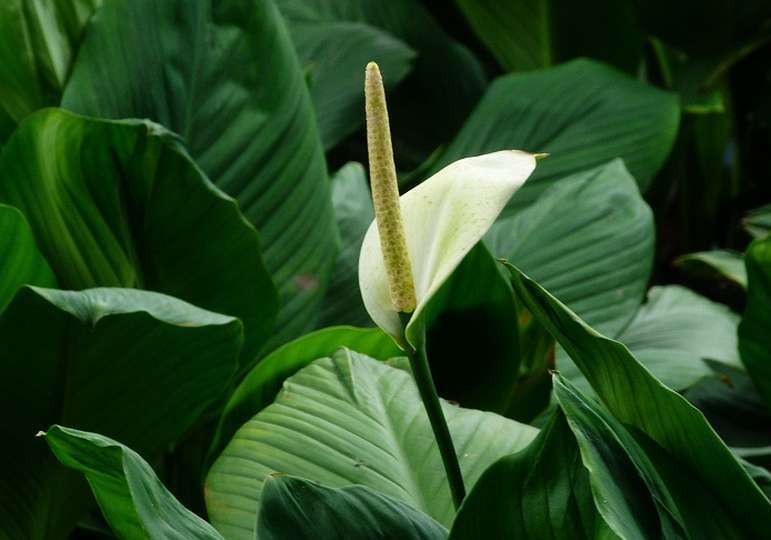
Rules for caring for a flower at home
Spathiphyllum is a houseplant native to the rainforests. Its origin largely determines the characteristics of care and maintenance at home.
Temperature
This plant is thermophilic. For its successful cultivation, a temperature of at least 18 degrees Celsius is needed, and better, even higher.
Direct sunlight for the flower is rather unfavorable. He needs diffused light, for this reason it will be optimal to place it not on the windowsill, but near it, so there will be enough light. If the pot is located on the windowsill, then during bright sunlight, the window must be shaded.
Shine
It does not require a special light mode, it is comfortable both in the light and in a shaded place. However, in the appearance of the plant, one can notice a lack of sunlight - if the leaves become smaller and become more elongated, then it is better to move it to a more illuminated place.
Watering, fertilizing and spraying
Spathiphyllum requires watering all year round. In winter, watering should be slightly less so as not to provoke freezing of the roots. All the rest of the time, watering should be plentiful, optimally - with standing water.
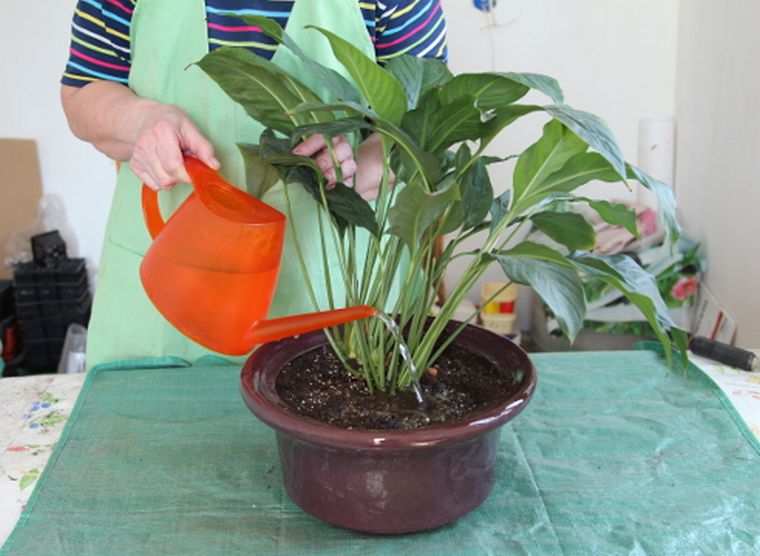
He also requires spraying - as a resident of tropical forests, he needs high humidity. If there is no possibility to spray constantly, you can place the pot in a pan with wet moss or sand.
Compliance with irrigation without additional fertilizer will be insufficient. Ideal - to purchase a special fertilizer for flowering plants, but you can get by with universal fertilizer. In the warm season, it is advisable to fertilize the soil once a week, in winter the amount of fertilizer can be reduced.
Pests, diseases and their control
Typical pests for indoor plants are considered to be:
- A spider mite twists spider webs on the back of the foliage, as a result of which the leaves curl and turn yellow. To get rid of this parasite, it is necessary to use a fungicide, after removing the cobwebs, and then transplant the plant.
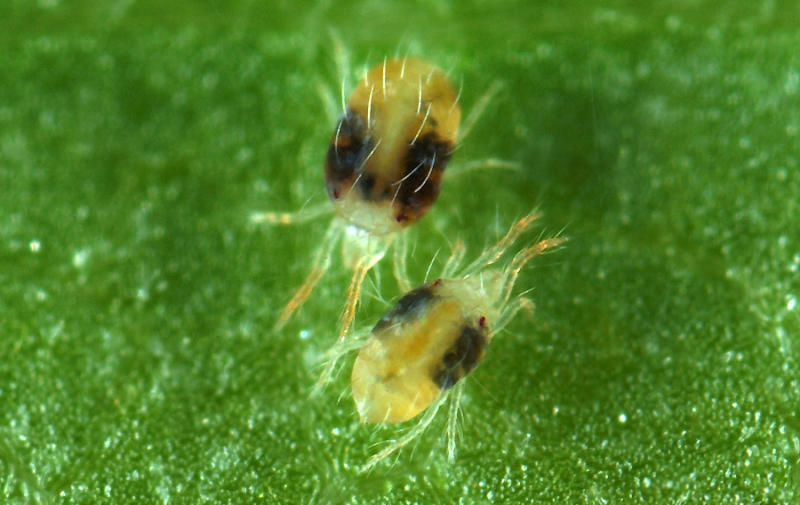
Spider mite - If the watering is too plentiful, the mealybug attacks the flower. To get rid of it, flower growers recommend wiping the leaves with citrus juice.
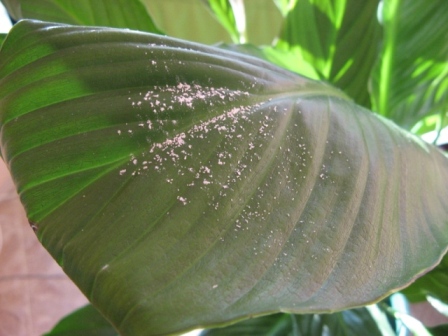
Mealybug - On the outside of the leaves you can see a sooty mushroom. For treatment, it is recommended to wash the leaves with a soapy solution.
- If dark spots appear on the foliage, aphids will attack them. To get rid of it, use a mixture of soap and kerosene.
In any case, the house should always have a cure for parasites in order to start the fight as soon as possible.
In addition to parasites, the appearance and condition of the flower is largely influenced by the conditions of maintenance and care:
- if the tips of the leaves dry, the flower does not have enough moisture;
- if the leaves turn yellow and lose turgor - bright sunlight harms him;
- shrinking and stretching leaves is also a consequence of a lack of light;
- the absence of flowers for a long time is a consequence, as a rule, of several of the above reasons.
How to propagate and transplant a flower at home
Like any other domestic flower, spathiphyllum needs a transplant from time to time. It is better to do this in the early spring, moving the plant into a larger pot.As the soil, it is necessary to use a mixture of turf soil, peat, leaf soil, humus and sand in the proportions of 2: 1: 1: 1: 1. In addition, it will be useful to use charcoal in the soil.
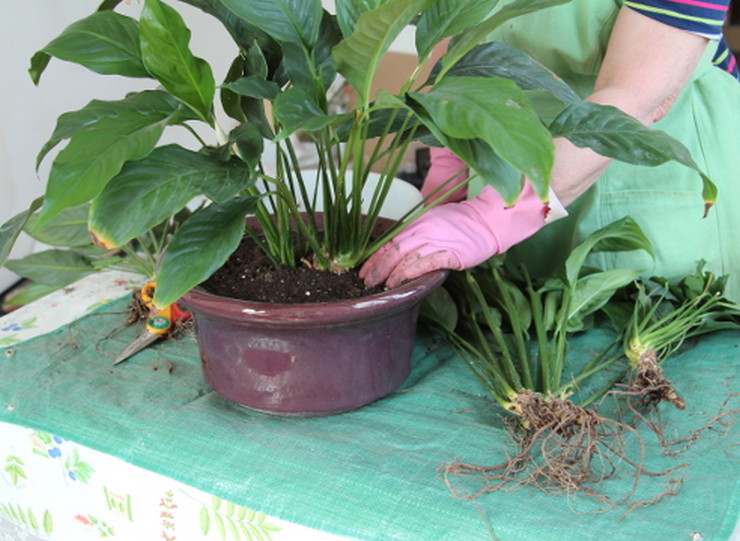
Speaking about the size of the new capacity for growing, it should not significantly exceed the size of the rhizome, otherwise the spathiphyllum will not bloom soon - all the forces will go to the growth of the root system, and not new flowers. Reproduction can be done in several ways.
Cuttings
If you separate leaf sockets from the adult spathiphyllum - this will be the cuttings. If there are small roots on the cuttings, they can be immediately planted in the soil. If not, you need to grow roots first. Several options are suitable for this - wet sand, water with the addition of activated carbon. You can use special substrates - peat or moss.
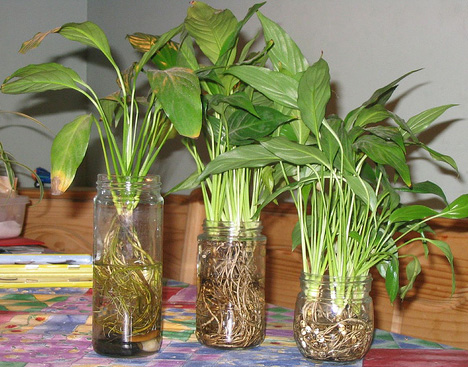
If the temperature regime is observed correctly, the roots form quickly enough. After this, the stalk is planted in a pot, and further care is carried out according to the general principles of care.
Dividing the bush
Reproduction by dividing the bush is an excellent means to accelerate growth, because with this method thinning the bushes occurs, and the adult flower grows faster. The division of the bush must be done in the spring, before the start of the growing season.
Before the procedure, the flower must be abundantly watered. This will make the roots less brittle. After removing the bush from the soil, the rhizome must be thoroughly rinsed from the ground and rid of dry and rotten elements.
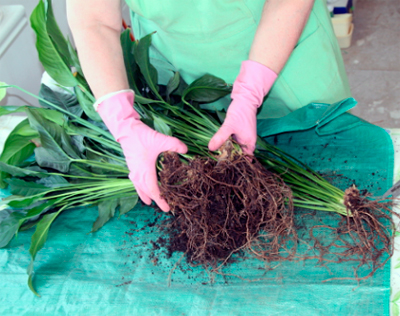
Places of separation of the roots must be sprinkled with crushed activated carbon and left in such a way that the slices are dried. For separation, it is better to choose bushes on which there is a growth point and three leaves.
Cut bushes are planted in separate small pots. The soil is selected the same as for transplanting an adult plant, mixing leaf, peat, sand and humus. To improve drainage, you can add a little crushed brick. Or you can buy ready-made soil, preferring a mixture for growing the Aroid family.
Seeds
To propagate a flower using seeds, you can choose one of the options: buy ready-made seeds or get them yourself. Finished seeds are sold in specialized stores. When acquiring them, it is very important to pay attention to the expiration date indicated on the package, since from practice only half of all seeds can sprout after sowing.
To obtain seeds at home, it is necessary to pollinate the flower artificially. After pollination, seeds should appear in the form of green peas, which must be quickly collected and planted immediately, since they are not subject to long-term storage.
A plant is sown in a small flat container, filling with soil from a mixture of peat and sand. It is necessary to maintain a constant temperature at the level of 24-25 degrees, and to water by spraying. The container is covered with a film, periodically airing. If you do not ventilate and saturate the soil with moisture, mold will start under the film and the seed will die.
History of growing flowers and signs
The discovery of female happiness is rooted in the 19th century. It was then that the plant was first discovered by German scientist Gustav Wallis. Once in Europe, it attracted the attention of breeders not only by inflorescences, but also by the characteristics of the leaves. This marked the beginning of deep breeding work, as a result of which many varieties of this plant were obtained.
Spathiphyllum can be found in its original form in the countries of South America: Brazil, Colombia, mainly in wetlands or on the banks of fresh water bodies.
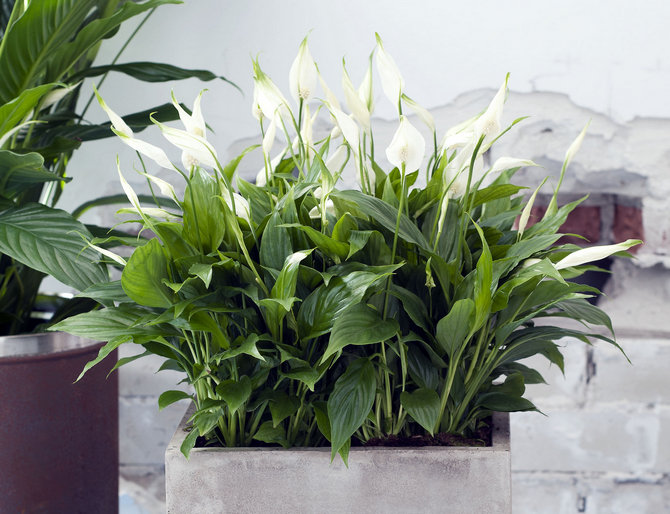
Many signs and superstitions surround such a now popular home flower. It is believed that he is able to bring happiness not only single and unmarried, but also family and childless.Thanks to his magical power, you can soon get married and get married, establish family relationships and resolve conflicts, and feel the joy of long-awaited motherhood.
Common Growing Questions
Spathiphyllum is a relatively unpretentious plant. But like any living organism, it requires attention and care. Subject to simple rules, he will decorate his home, and possibly bring happiness in his personal life.

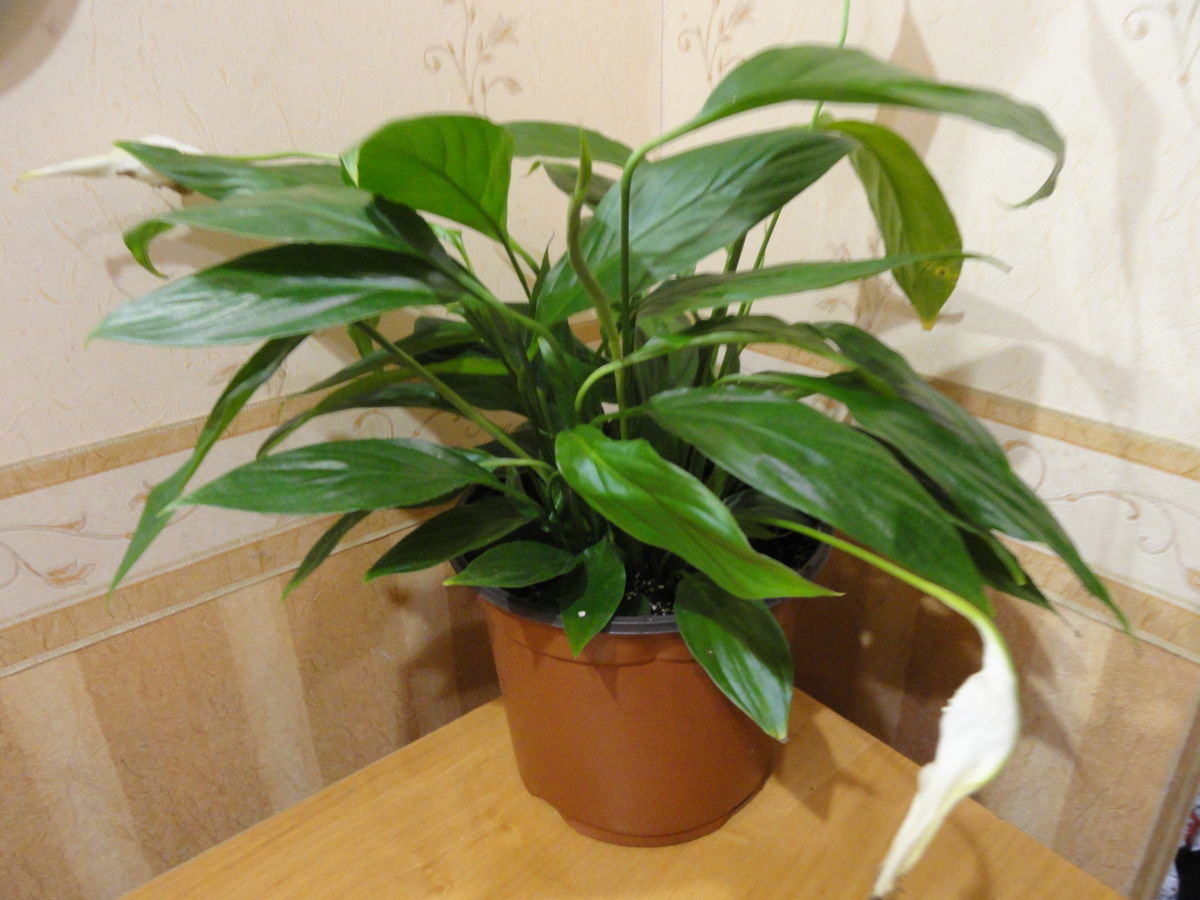
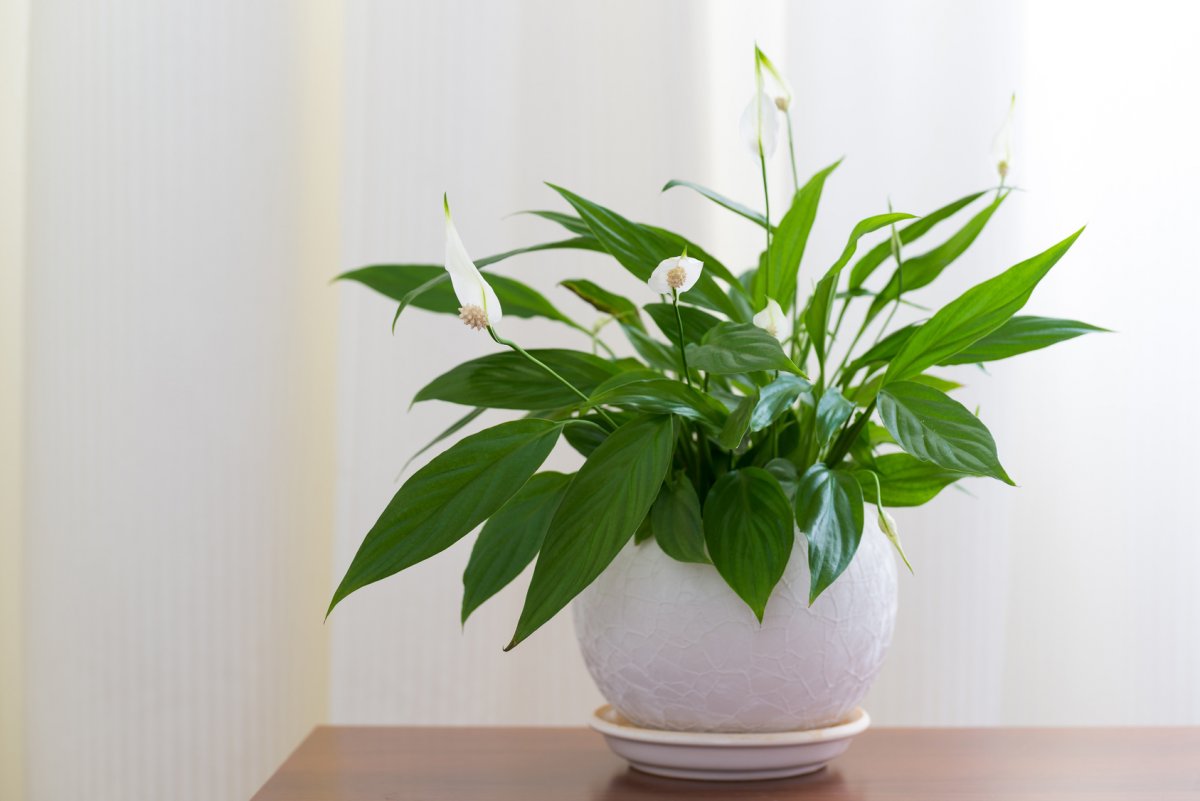

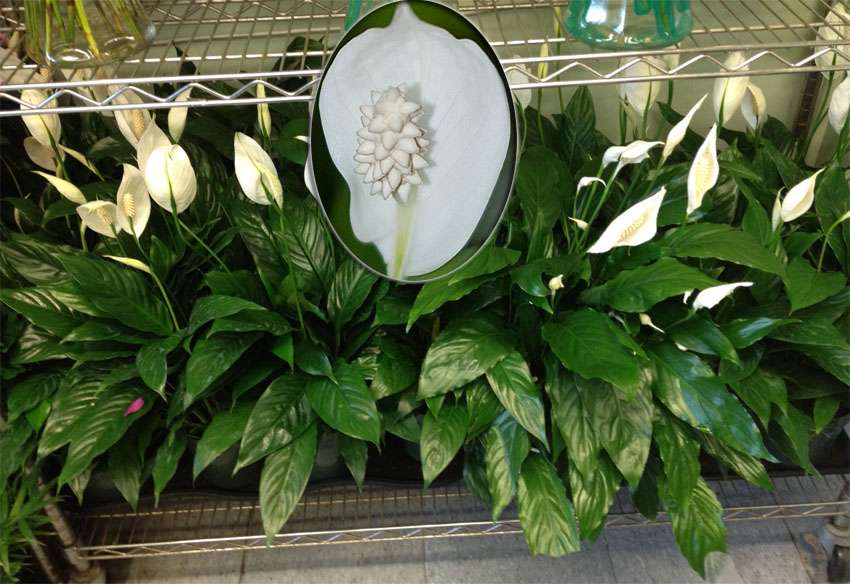
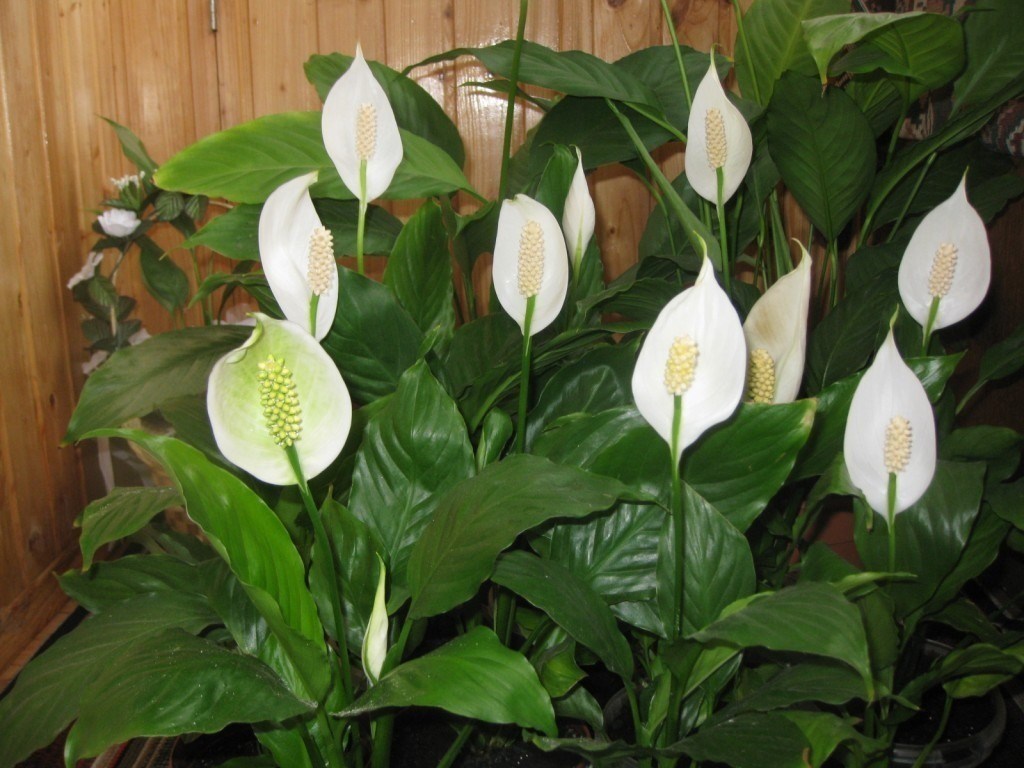
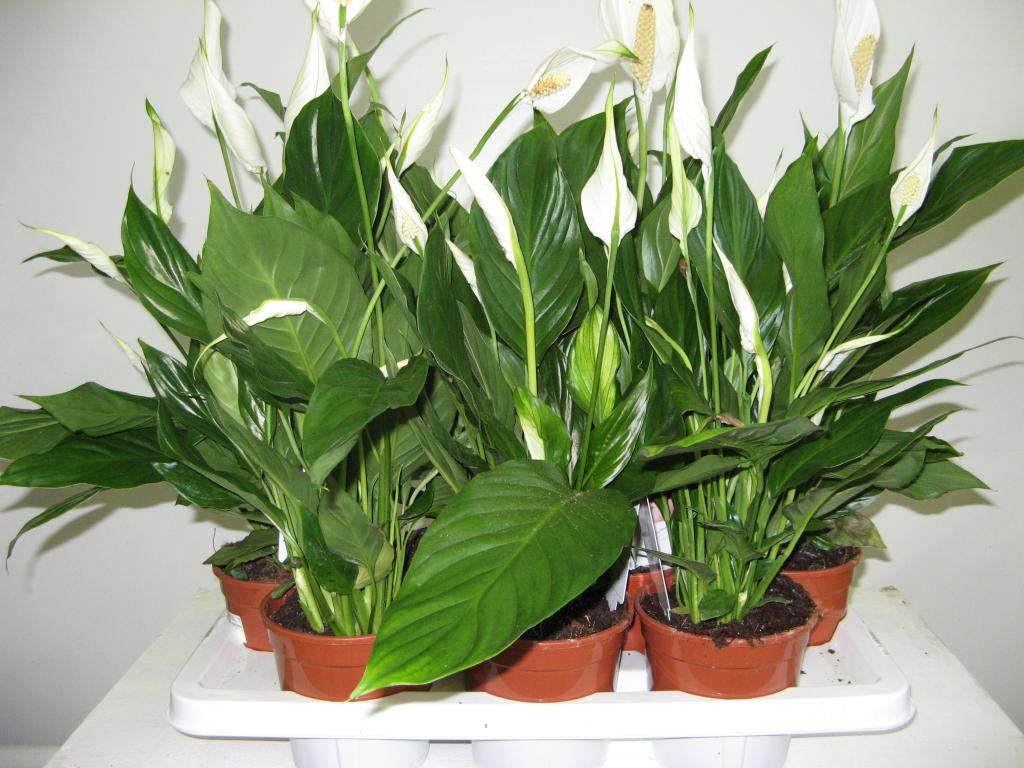
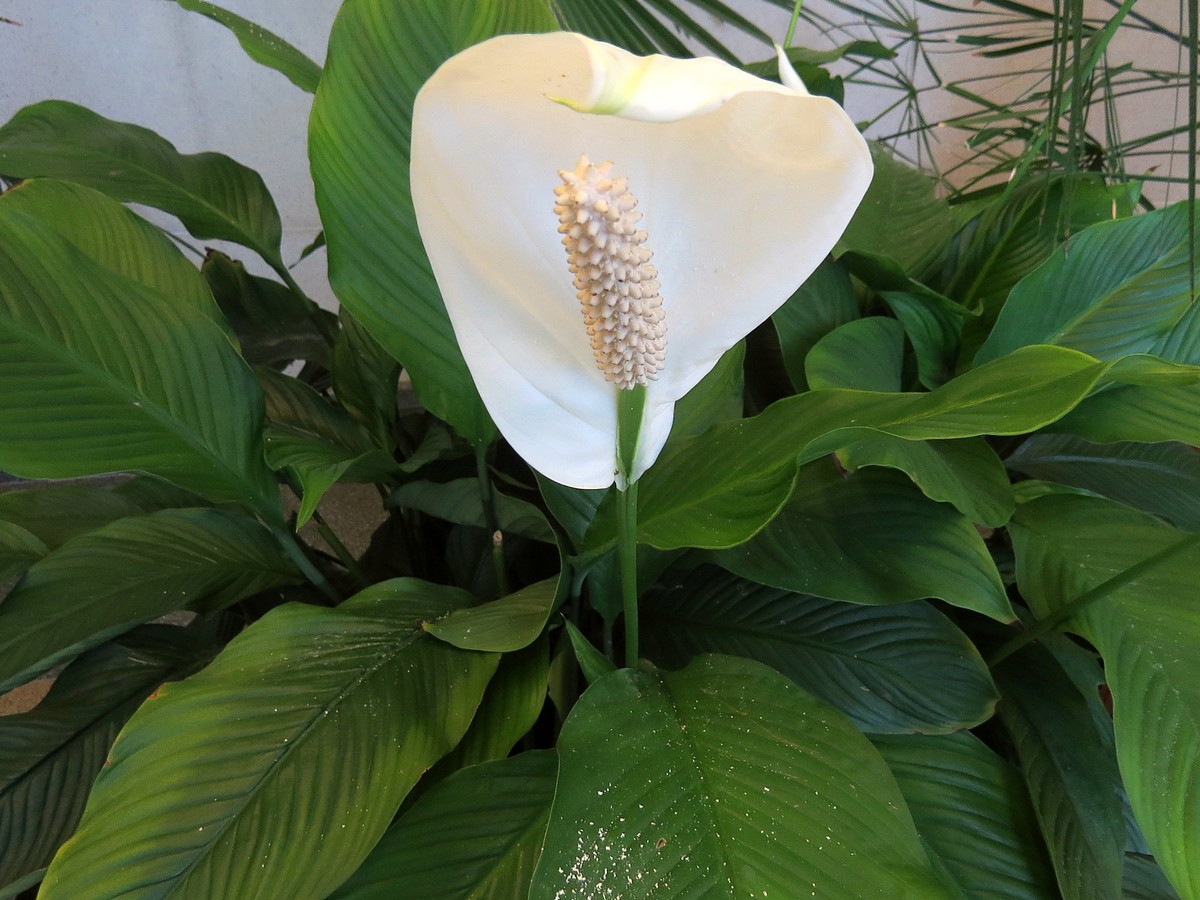
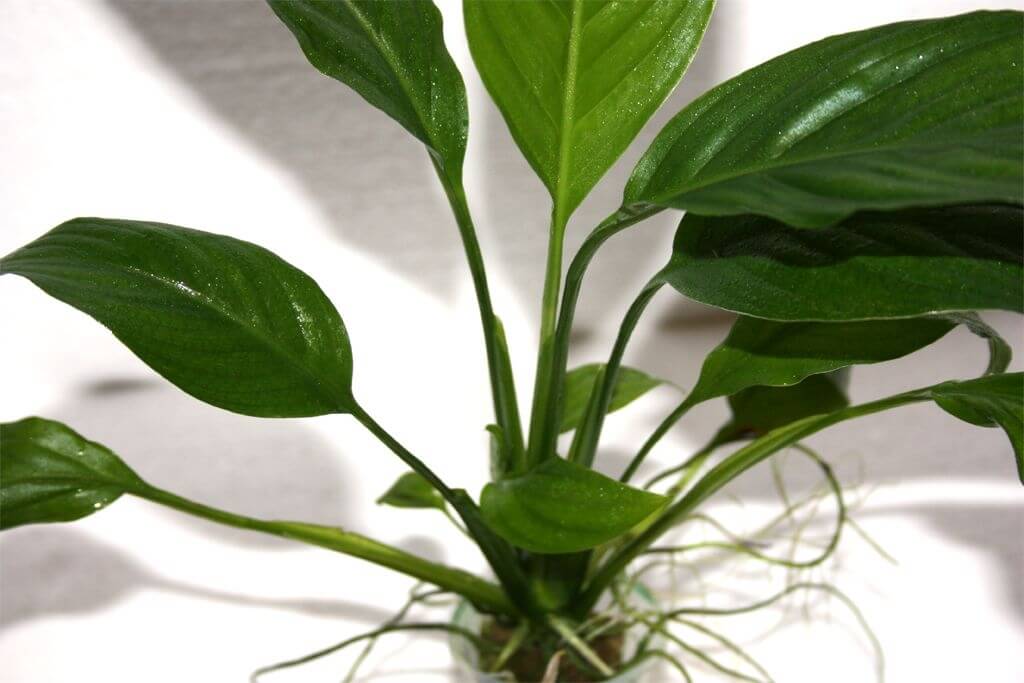
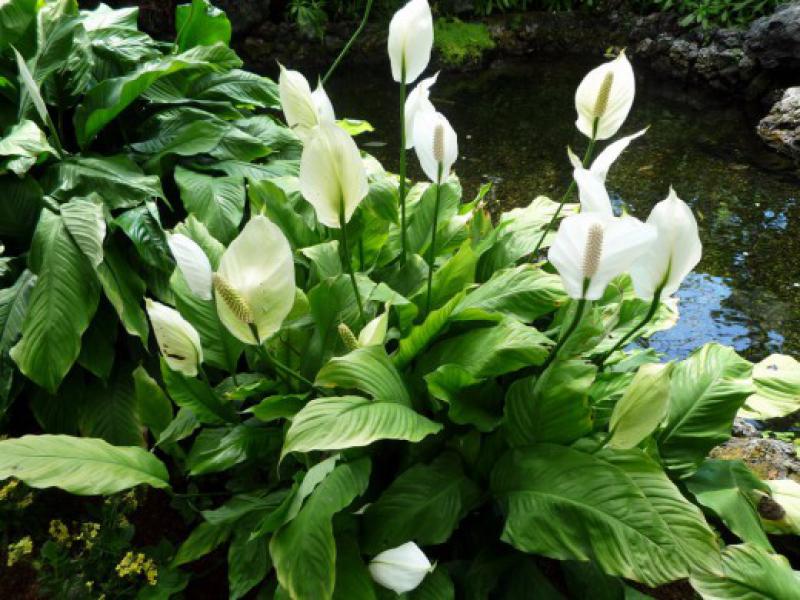
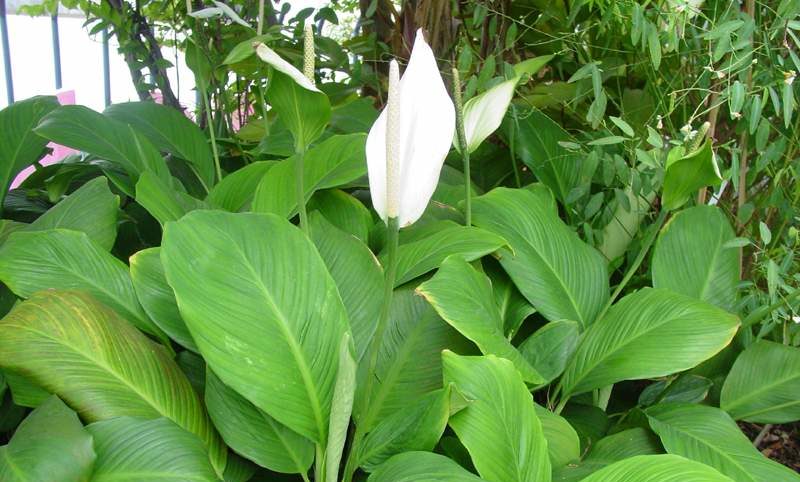
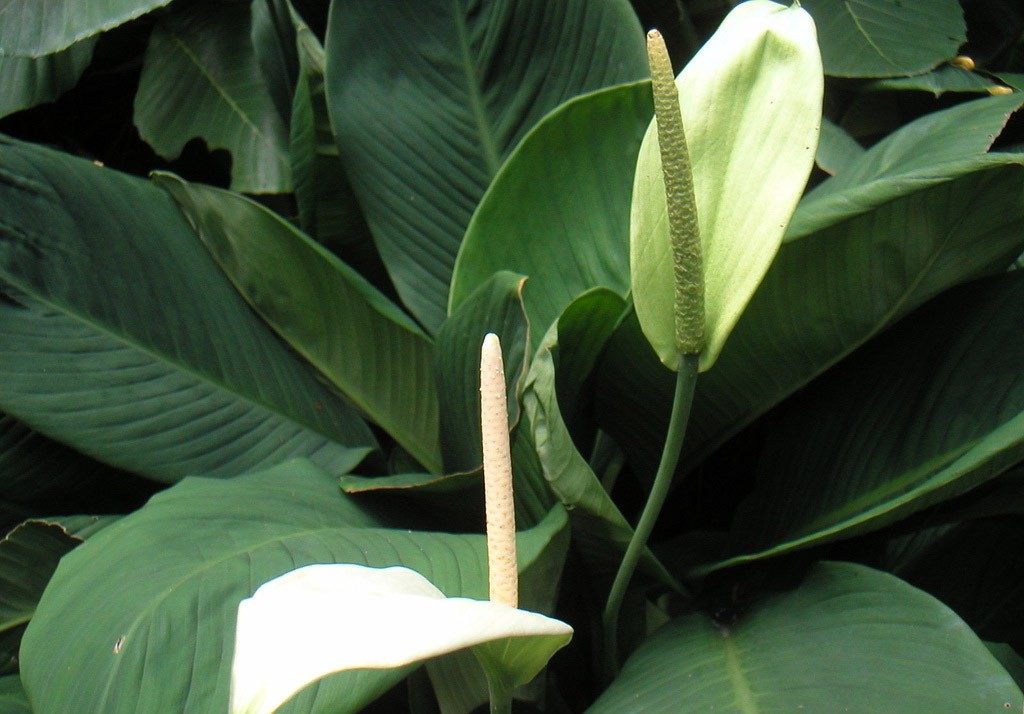
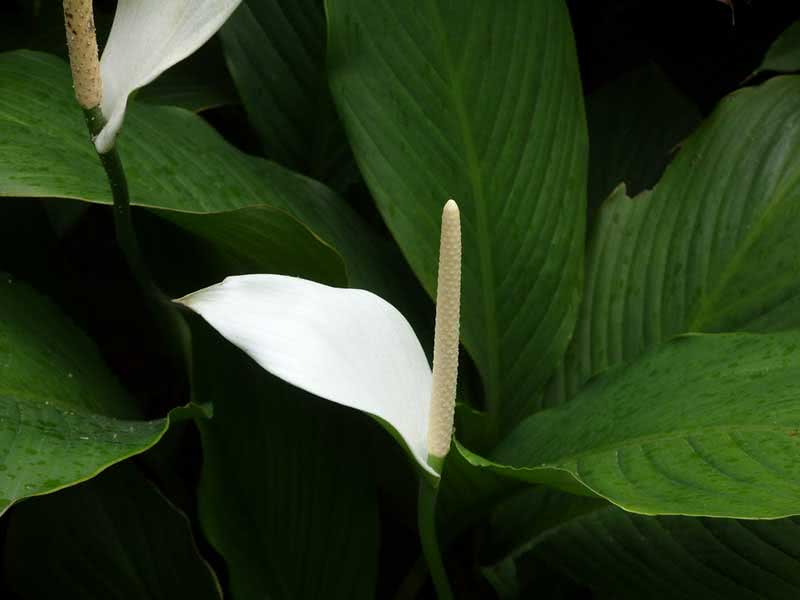
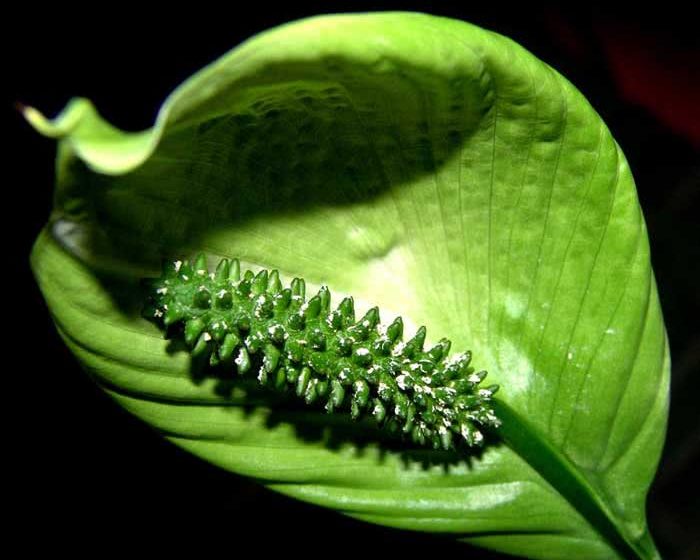
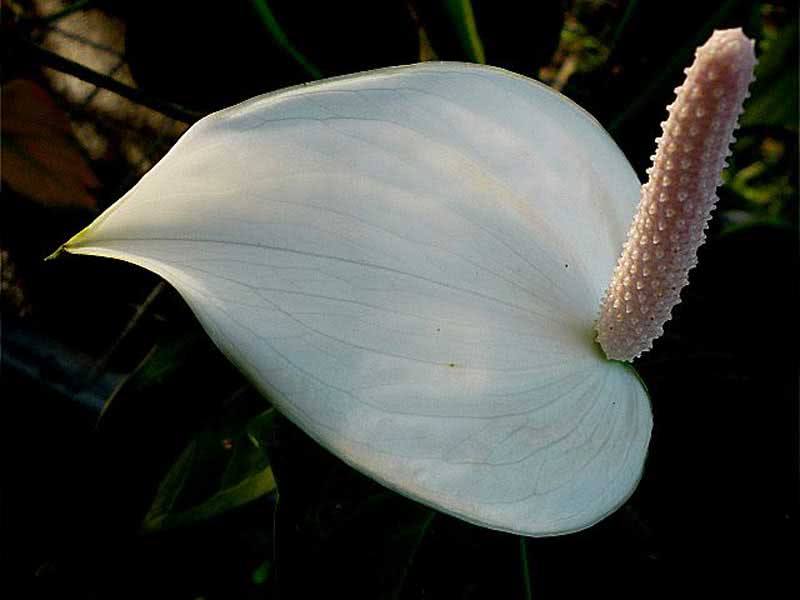
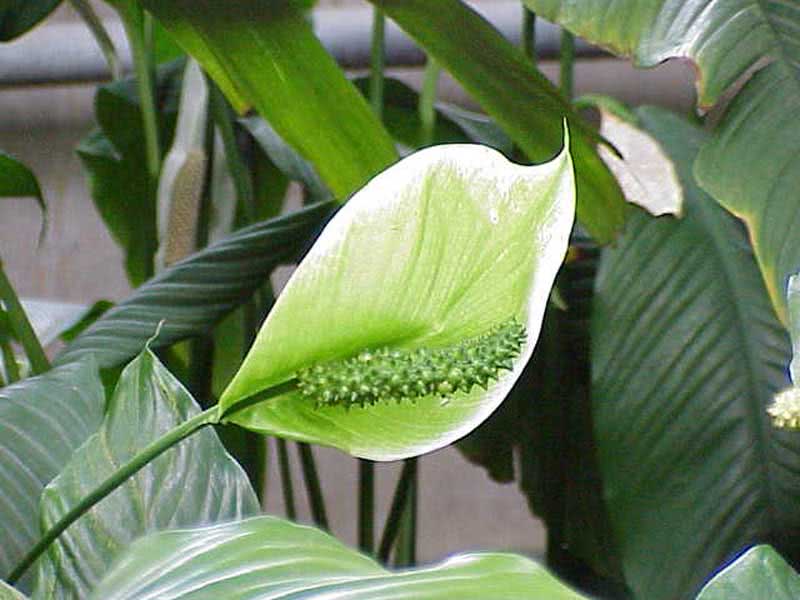
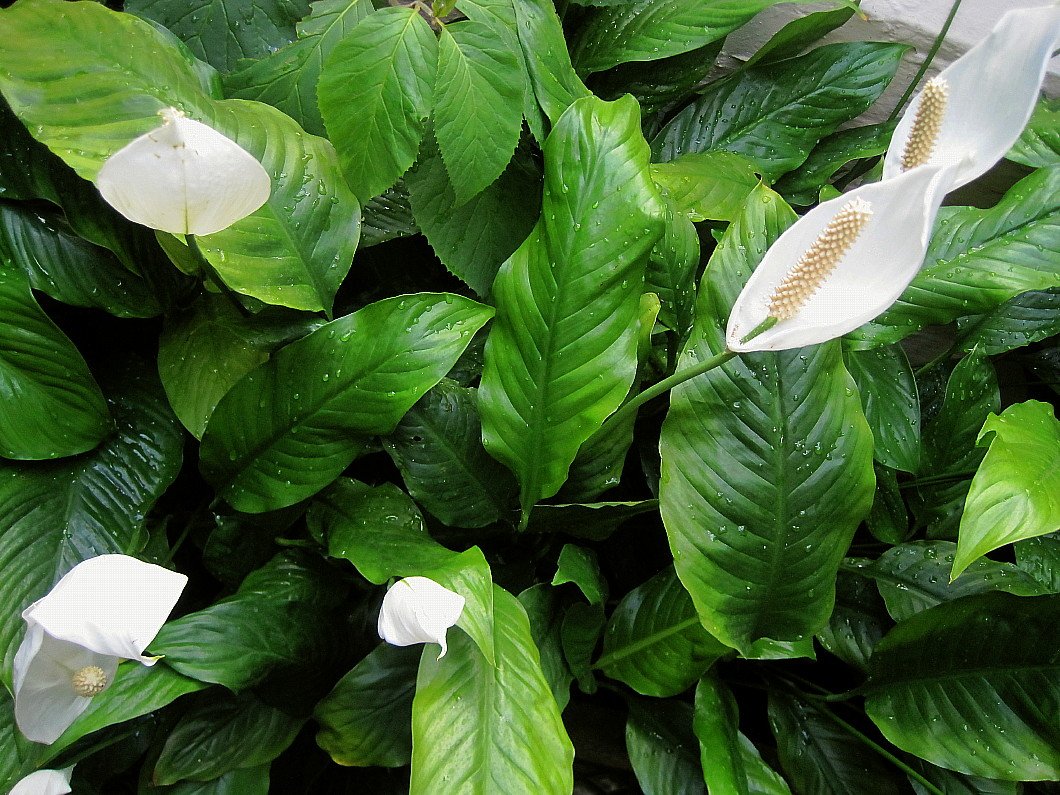


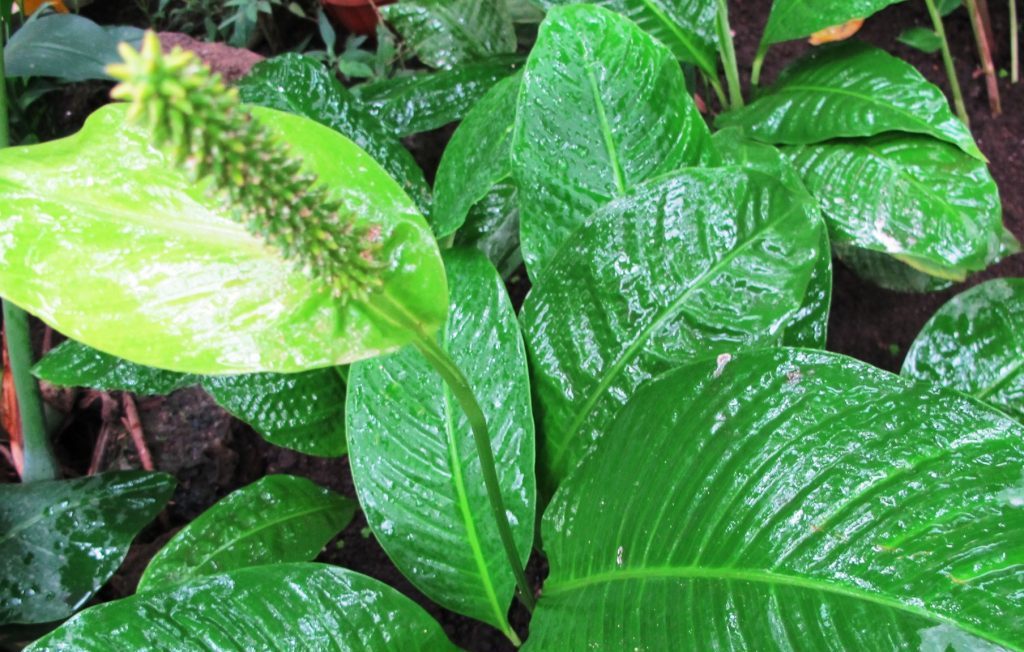
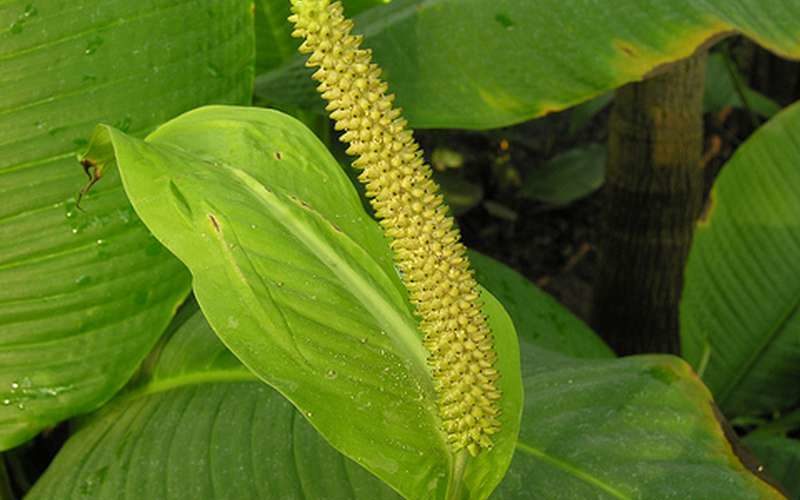
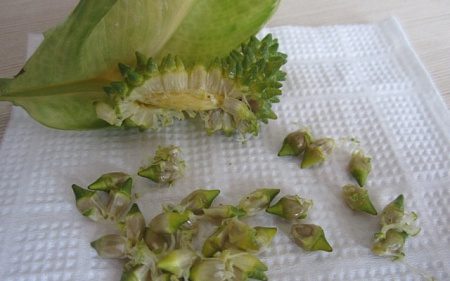
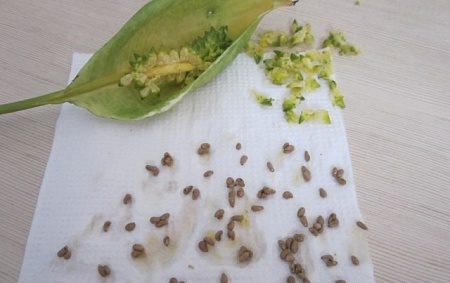
 10 beautiful annuals that bloom all summer
10 beautiful annuals that bloom all summer Sow in the ground, without seedlings: 10 beautiful and unpretentious flowers
Sow in the ground, without seedlings: 10 beautiful and unpretentious flowers Platicodon planting and outdoor care
Platicodon planting and outdoor care Hosta - planting and care in the open ground in the Urals
Hosta - planting and care in the open ground in the Urals